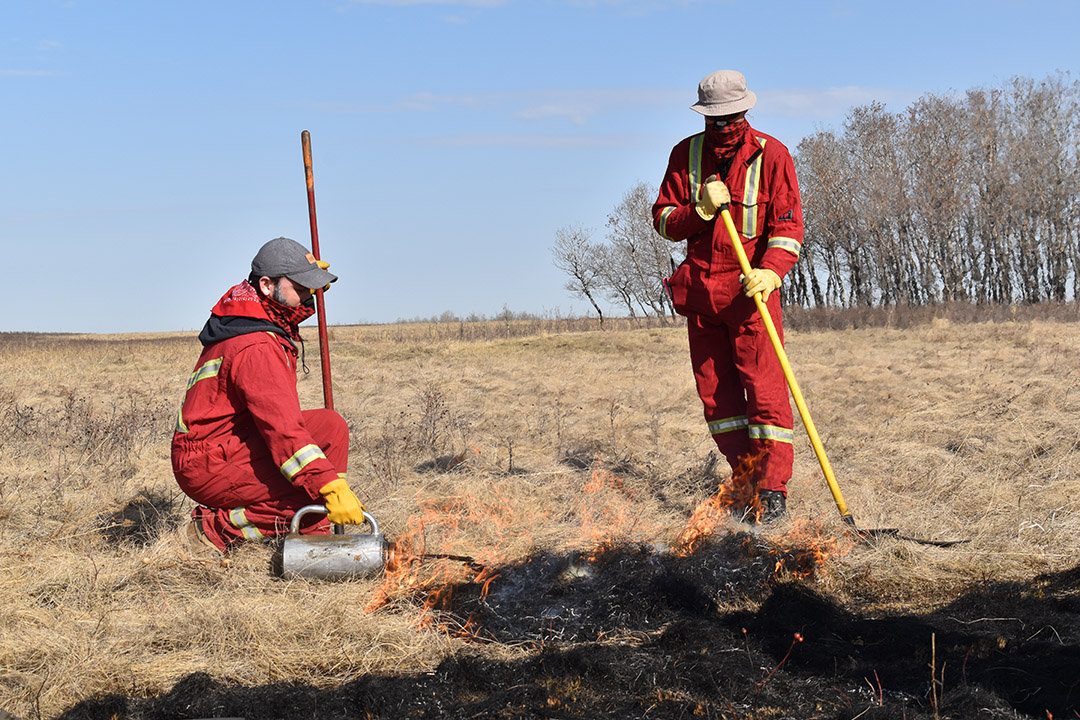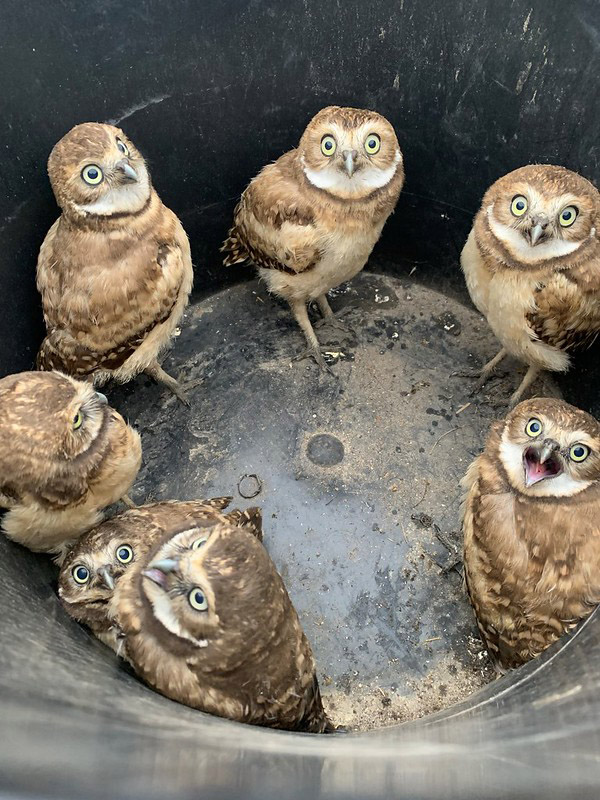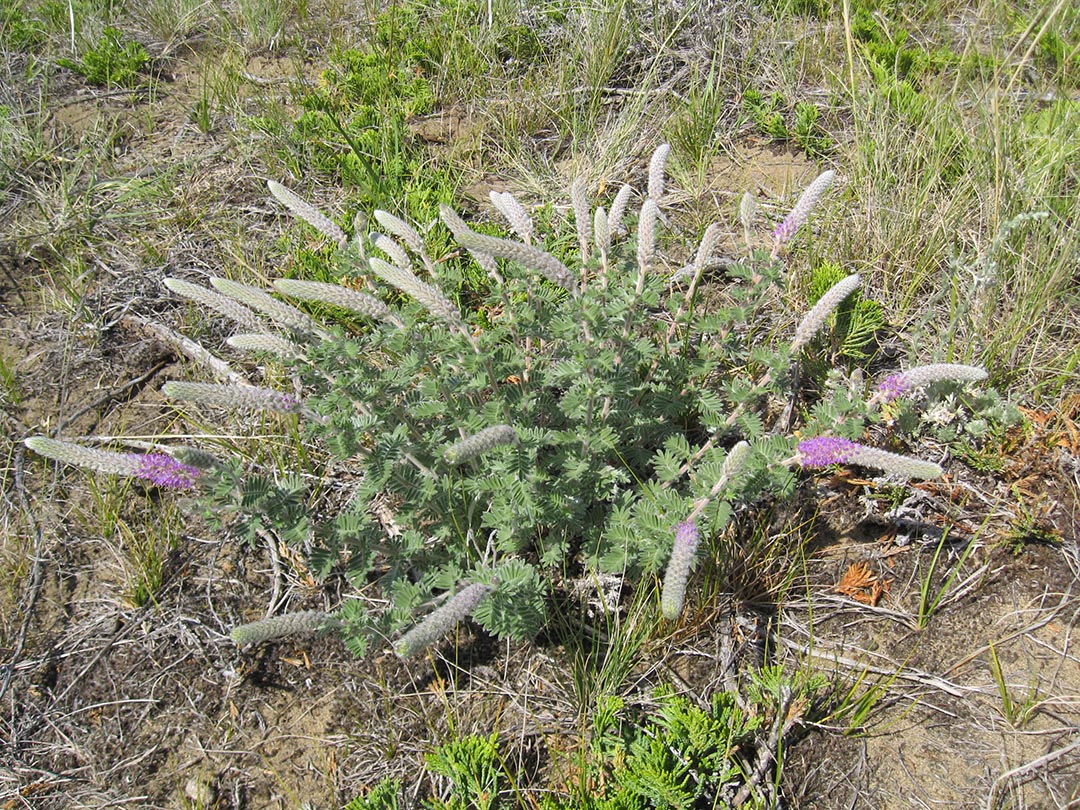
Protecting endangered species and habitats
Dr. Eric Lamb (PhD) understands there are no easy answers when it comes to the delicate balance between ecology and the economy in a proudly agriculture-driven province.
By James ShewagaThe University of Saskatchewan (USask) scientist knows the crucial role that researchers in the College of Agriculture and Bioresources, and in the Global Institute for Food Security (GIFS) at USask, continue to play in finding better ways to feed a growing world population.
However, with every additional acre of native Prairie grassland plowed under, Saskatchewan takes another step closer to permanently losing endangered plant and animal species, pressuring precious ecosystems and contributing to climate change with the release of carbon into the atmosphere. Along the way, the USask researcher has discovered that the stereotypical rugged rancher and the passionate professor have become somewhat unlikely allies in their shared interest to promote both preservation and production.
“The point that is critical to make is the single strongest defender of keeping remaining grasslands intact is the livestock industry,” said Lamb, associate professor in the Department of Plant Sciences and head of the Saskatchewan Plant Community Ecology Lab at USask. “There is no point in sugarcoating things, and given current rates of grassland loss this is not a good news story. When we talk about climate change and preserving our grasslands, these are not good news stories. These are stories of endangered species that are barely hanging on in the face of increasing pressures. But, a profitable and well-managed livestock industry is essentially the primary defence.”
As the United Nations spotlights World Wildlife Day on March 3, this year’s theme “Recovering key species for ecosystem restoration” resonates with Lamb, whose research is dedicated to everything from conservation biology to grazing and fire ecology. Preserving what is left of the province’s natural grasslands — which is also key to successful beef production — and protecting Saskatchewan’s other rare and endangered habitats has been the focus of Lamb’s lifetime of research.

“The Prairies, perhaps with the exception of hardwood forests in southern Ontario, are the single most human-affected landscape in Canada,” said Lamb. “We think of the Prairies as being kind of wild, but the reality is they are an industrial landscape where the vast majority of it has been converted to intensive human activity and there is no other ecosystem in Canada that has been converted at the rate the Prairies have. We have converted anywhere from 70 to 95 per cent of the grasslands to agriculture. So these species that are endangered, they effectively exist on the margins.”
In Saskatchewan, endangered animal species include the Burrowing Owl, Sage Grouse, Swift Fox, Piping Plover, and the Whooping Crane, while endangered plant species include the likes of the Small-flowered Sand-verbena clinging to select sandy areas around riverbanks, and the Hairy Prairie-clover, found in the Dundurn region south of Saskatoon. In order to protect endangered species, Lamb said we also most focus on preserving the unique habitats in the province that support them.
“We have the Athabasca Sand Dunes species in the far north, which are unique because it is the largest collection of species unique to Canada anywhere,” said Lamb. “On the other side, we have our grassland species and these are all the grassland birds, Burrowing Owls and animals like the Swift Fox, and these are species that are basically habitat-limited. They used to be very widespread across the Great Plains, but they require intact grassland environments to survive, which we have relatively little of, and less and less of each year.”
Once flourishing fescue grasslands are now rare in the province, although one locale is on the edge of Saskatoon, and an important destination for USask faculty and students.
“One of the largest intact pieces of fescue grassland in the province is actually within the city limits at Kernen Prairie, which is owned by the College of Agriculture and Bioresources and used as a research and teaching site,” said Lamb. “So there are these valuable places right within city limits, and we have patches of intact grasslands within the Northeast Swale at the northeast edge of the city that people can walk out to and check out as well.”
Lamb said protecting rare grasslands around the city and across the province can also factor into the climate change equation in Saskatchewan.

“The link to climate change is these grasslands that are being plowed up have a massive store of carbon in their soils,” said Lamb. “When we plow intact grasslands, we are releasing soil carbon, so that’s the climate change angle is that these habitats are holding massive amounts of carbon and with good management they can hold more. When they are lost to crop agriculture, it releases enormous amounts of carbon into the atmosphere. But, if they are maintained as intact rangelands, they are very resilient to climate fluctuations.”
Another important aspect of Lamb’s grassland conservation work also supports wildfire prevention, by using “controlled burns” to help lower the risk of devastating fires resulting from climate change causing more frequent drought conditions that create the tinderbox for disaster. Lamb said introducing fire in the form of controlled burns not only help to refresh grassland species, but can also serve as a firebreak that can help contain wildfires that are becoming a more frequent occurrence throughout the Prairies.
“When you get extreme weather conditions, high temperature, high wind, and drought-type of conditions, those are particularly challenging for wildfire management,” said Lamb. “When it’s hot and dry and the wind is blowing at 80 kilometres per hour, fires are effectively unstoppable. So one of the things that we have been finding is with judicious use of prescribed fires, you can help prevent wildfire spread.
“A couple of years ago, a wildfire that was encroaching into the Cranberry Flats area just south of Saskatoon became controllable because it moved up to the boundary of a prescribed fire set by the Meewasin Valley Authority a couple of years earlier and that patch became an anchor point from which they could control and divert the wildfire. So, it is a technique that can be really valuable.”
Lamb’s research group works with the Meewasin Valley Authority and the Nature Conservancy of Canada (Saskatchewan Office) as well as other organizations like the Canadian Prairie Prescribed Fire Exchange, to reintroduce fire in the form of controlled burns to help restore degraded grasslands and help lower wildfire risk.
“You don’t want to sit around and wait for a catastrophic wildfire, so under carefully controlled circumstances you can re-apply fire to the landscape to lower risk and help with grassland conservation,” said Lamb, whose controlled burn research brings him back to connecting with ranchers, helping to revive grassland grazing areas affected by wildfires.
“In 2017, there were those terrible fires in west-central Saskatchewan, thousands of hectares burned, hundreds of cattle dead, entire ranches burned,” said Lamb. “So I have had a research program in the last five years looking at how those grasslands recover following fire, with the goal of being able to better inform cattle producers on the recovery rates that they should expect following fires … The ranching industry is basically holding and protecting these grasslands. I would say that generational ranching families are hands-down some of the best stewards of the land that we have in the province.”
Article re-posted on .
View original article.
